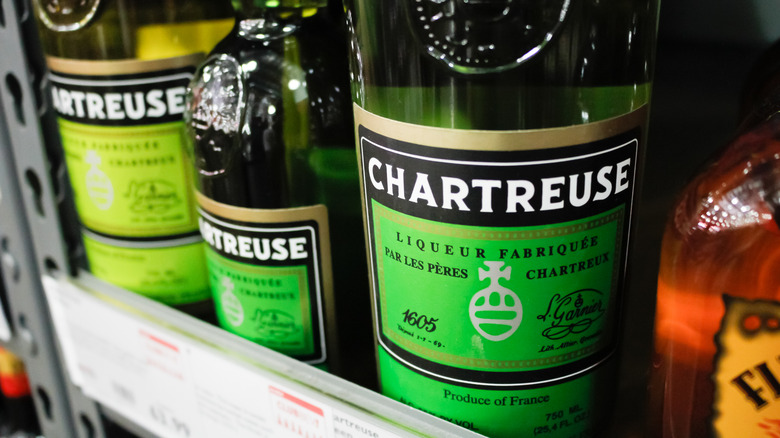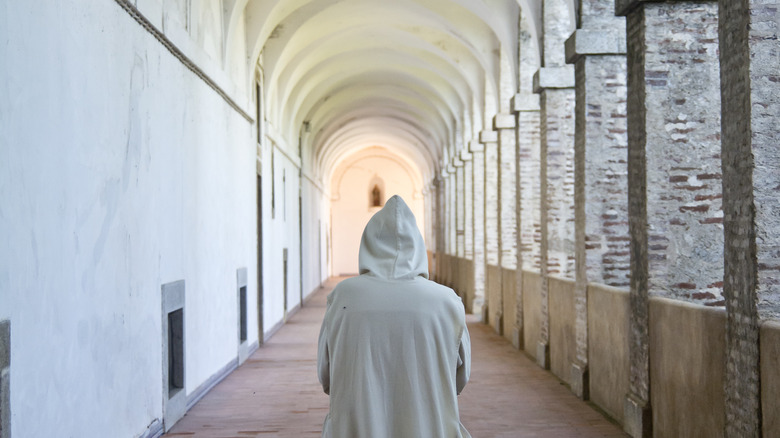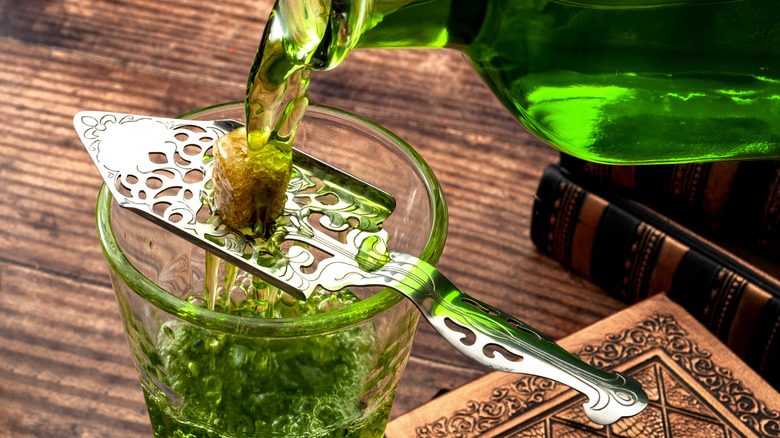Why Chartreuse Liqueur Has Nearly Dropped Off The Face Of The Earth
Chartreuse, the curious green (and yellow) libation made by Carthusian monks in the mountains of France, has mysterious origins that date back centuries. Originally created as an elixir of health and longevity, this complex liqueur is made with a secret blend of 130 plants, herbs, and flowers. But why has this viridescent liqueur nearly disappeared worldwide from liquor store shelves and bars?
Despite its unique taste, the production of Chartreuse has been capped since 2019 , for the first time in over 200 years, by the Carthusian monks. The exact recipe is kept locked away, with few people in the world aware of its full contents. One of them is Father Dom Benoit, who was in charge of production until recently. The other two are Brother Raphaël Marie and Brother Jean-Jacques, the current wardens of the coveted recipe. So, as you can imagine, it's nearly impossible to reproduce anywhere else.
With such a singular taste and captivating history, it's no wonder lovers of the drink are concerned about the future and scarcity of Chartreuse. Bartenders have been scrambling in search of replacements for the herbaceous liquor that's been a cocktail staple since the early 2000s, but alas, nothing quite compares.
However, after examining the reasons behind the Chartreuse production cuts, which were laid out in a recent letter straight from the monks themselves, we absolutely understand and respect the decision to scale back production of this unique spirit. Here's what their monastic life has to do with it all.
Shifting focus from spirit production to the Holy Spirit
The reason why Carthusian monks decided to scale back production of Chartreuse liqueur in 2019 is quite simple: devotion. According to the letter, the Carthusian monks believe that their lives should be dedicated to prayer and solitude rather than the mass production of the fluorescent liqueur.
Rev. Michael K. Holleran, a former monk in charge of Chartreuse production for four years during the late 1980s, told the The New York Times, "There's only so much Chartreuse you can make without ruining the balance of monastic life."
The monks' devotion to their way of life always comes first, even in the face of high demand for their products. And while the decision to scale back production was made from a deep commitment to their monastic traditions, the January 2023 letter obtained by Gin Raiders also cites environmental concerns as a reason for the decrease in production.
"Making millions of cases does not make sense in today's environmental context and will have a negative impact on the planet in the very short term," the letter stated, after explaining that the monks simply aren't interested in producing liquor beyond what they need to sustain their order financially.
And to be fair, producing Chartreuse is a resource-consuming process. For the monks to make a year's worth of the vibrant liqueur, they have to use about 40 tons of blended ingredients.
What can replace Chartreuse liqueur?
With the monks looking to, per their letter, "do less but better and for longer," it looks as though Chartreuse production will be capped for the time being. While Chartreuse's 55% ABV liqueur isn't the only digestif on the market, its marked lack of presence on bar shelves has led some to wonder: What can replace Chartreuse in today's popular concoctions?
While Chartreuse's flavor profile is quite distinct, other herbaceous liqueurs are suitable substitutes. For example, Haus Alpenz's Dolin Génépy le Chamois is a similar herbal liqueur also produced in the French Alps. It's crafted with a blend of herbs, flowers, and alpine plants found in the Savoy Alps near the French city of Grenoble. It has a balanced flavor, with notes of thyme, rosemary, alpine meadowsweet, and other herbs.
If Dolin Génépy proves hard to find, other options such as white sambuca or absinthe may suffice, with the latter being a particularly apt choice due to its iconic emerald green hue. Absinthe offers similar herbaceous flavors to Chartreuse but tends to have a more earthy flavor profile than Chartreuse due to the presence of herbs such as fennel, wormwood, and anise.
Regardless of how you substitute Chartreuse liqueur, the cutback serves as a reminder of the Carthusian monks' centuries-old commitment to their way of life. Plus, connoisseurs can now enjoy the added excitement and exclusivity of getting their hand on a hard-to-find bottle.


